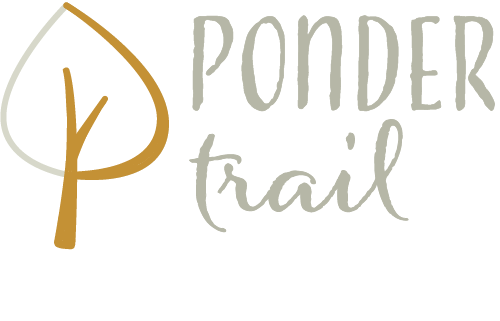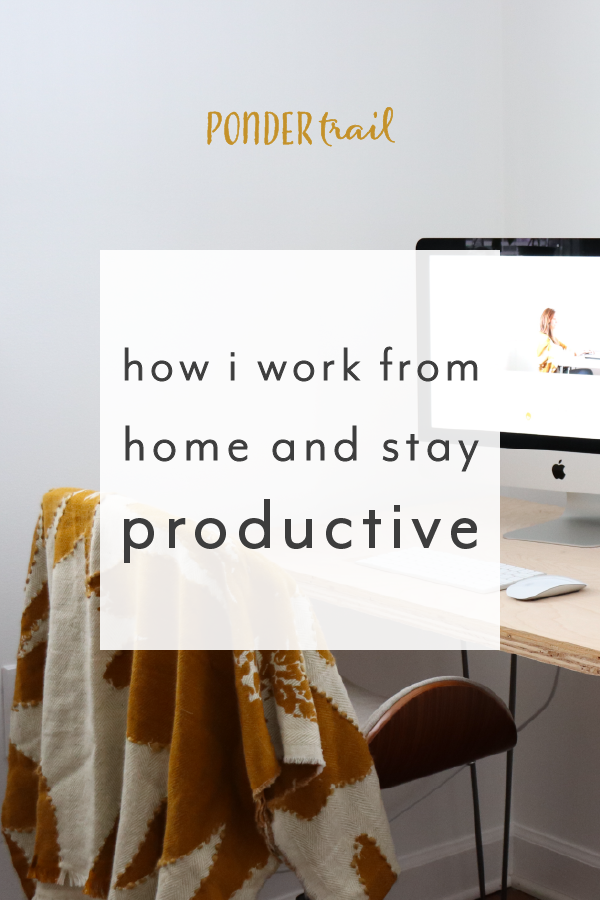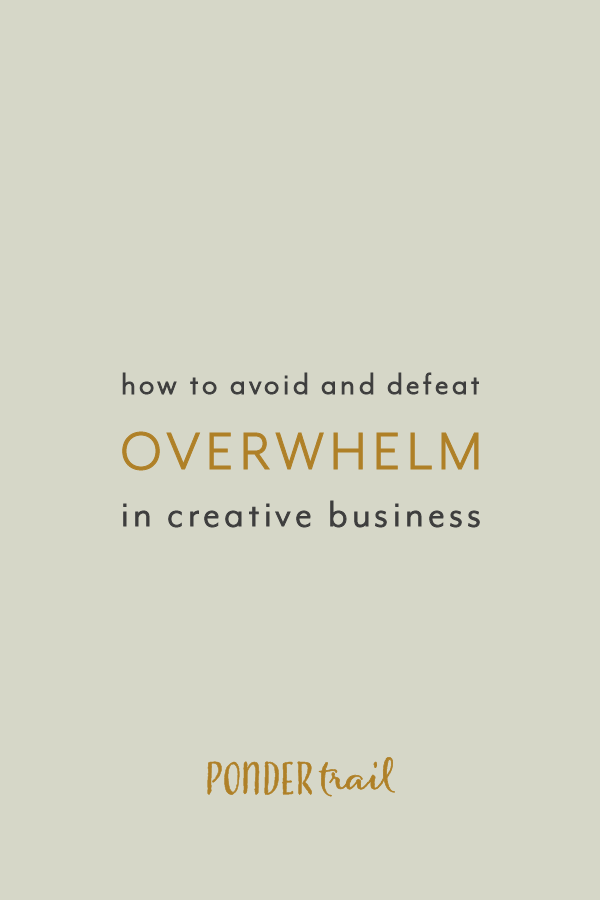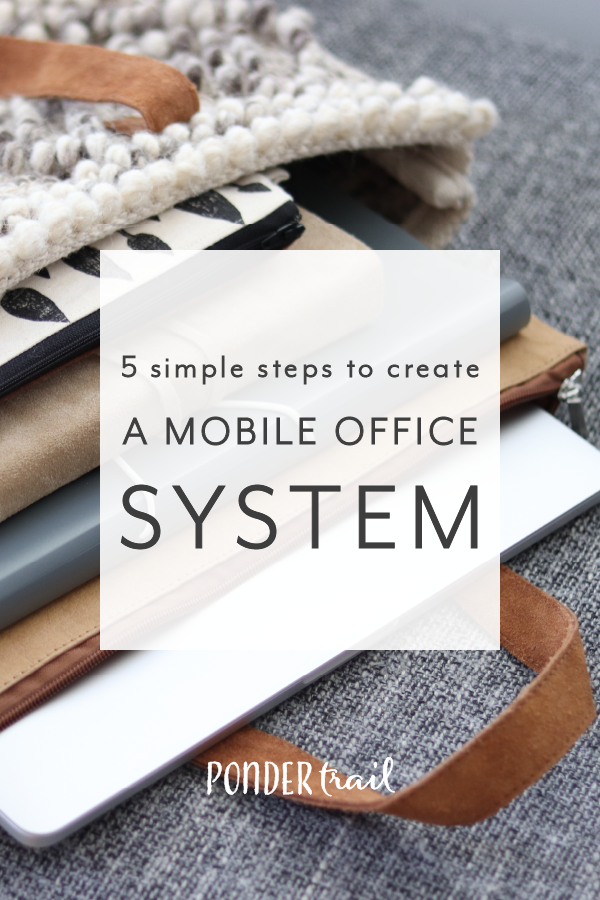How I Work from Home and Stay Productive
Working from home is a huge blessing that comes with having my own business. And while most of the time it’s amazing, it does pose its own challenges.
Common struggles among creative entrepreneurs living the work-from-home life often include managing time, limiting distractions, and avoiding the dreaded cooped up feeling.
Over the course of five years of working primarily from home, I’ve tried countless methods to overcome these hangups—and boy did they plague me when I was first starting out.
After all of the trial-and-error, I’ve honed in on the top strategies that made running an online business from home a magical experience.
So here are 11 simple practices I follow to help me stay productive each day.
1 // I follow a schedule and routine for each day.
Every day looks a little bit different since I batch many of my tasks (more on that in step #6). And some days have a varying start time, too, so I have a routine for each one.
Though no two days are the same, I try to keep my work hours, break times, and personal tasks scheduled at the same time across the board to help my mind stay in a productive rhythm day by day.
I block out chunks of time to get work done, cook, clean, and do other odds and ends that need taking care of.
This was the most difficult part to master for staying productive at home since our schedule has always been unconventional and ever-changing. But this challenge has helped me be able to adapt quickly and create new schedules on a whim.
While it takes time to work out the kinks of a daily routine to make it “just right,” the time spent doing so is well worth the effort. I would be lost without my schedule system.
Related post: My Productive Work-from-Home Schedule
2 // I follow a “must-do” list each day.
For business tasks:
I no longer use the traditional “to-do list” method for tracking business tasks I want to accomplish. Instead, everything that goes onto my daily list is considered a “must-do” task.
This means I have to be extra intentional about what makes it onto my list and how I spend my time each day.
I used to keep a running list of tasks for my business, but I struggled to check them off because the list was overwhelming. I wasted time rewriting items and deciding what to work on every day.
So now, the items on my list come directly from my goal-planning process. This process results in a list of all of the action steps I need to do in order to meet my goals on time. It gets rid of the overwhelm and keeps me focused and on track instead.
Each day, I know what I need to work on rather than writing down whatever I feel like doing or following whatever ideas pop into my head that morning.
For personal tasks:
When it comes to personal tasks, I’m usually on less of a time crunch, so I don’t always set deadlines for my goals or plan them out in as much detail. I typically use two lists: one is an ongoing to-do list I create each month, and the other is a must-do list I create each week.
On Saturday or Sunday, I circle the next bunch of tasks I want to work and copy them over to my must-do list for the week.
For out-and-about tasks:
If I’m going out to run errands one day, I also create a separate list for that, too. It’s helpful to start writing the errand list a few days beforehand so I have time to think of everything I need to get or do. This always saves me from forgetting things.
3 // I prioritize my tasks and my time.
I organize my tasks and structure my schedule in a way that increases productivity.
For example, to determine when I work on which tasks, I prioritize my tasks according to a few determining factors:
Difficult or looming tasks
Tasks I tend to put off
Tasks with upcoming deadlines
Tasks that carry a lot of weight
That ones that fall into these categories are the most important tasks for me to work on and complete, so I try to tackle these high priorities first.
I also prioritize my time by filling early hours with critical tasks and filtering down through the rest of the day from there. I find it helpful to get the big things done first since it makes my work feel easier as I go. Plus, I like the momentum it creates.
This leads us to the next step . . .
4 // I treat my mornings as a special time because they set the tone for the day.
The most important part of my day is the morning because it often determines whether I have an awesome or a mediocre workday. In fact, I call it my “golden time.”
There are two main things I do during my golden time:
I carefully select the type of work I do in the morning.
I have a dedicated space where I complete my morning work session.
During this morning time, I am very particular about what I choose to do, and I only work on tasks that are high on my priority list. I pick things that make a huge impact on my day and help me “show up” and feel ahead of the game.
I also like to work in a physical location that is separate from my typical spot (my desk) for my morning hustle because it lets my brain know it’s time to dive in and be focused and productive.
Utilizing a separate space also prevents me from feeling like I’ll be stuck there all day since I know this is my special area for my initial burst of work.
5 // I have different work zones throughout the house and change up my location often.
To take it a step further, I like to have several areas to work in during each chunk of time throughout the day. It helps me break up the work day so I don’t lose track of time, get distracted, or waste a day without being focused.
My work zones typically look something like this:
Morning focus time: kitchen table
Focus session 1: desk
Focus session 2: couch
Flex session: varies
I highly recommend carving out a few nooks in your home that you can use to break up your workday. It truly makes all the difference in productivity!
Related post: How to Create a Productive and Inspiring Workspace (at Home or in an Office)
6 // I batch tasks.
Batching tasks has also been a huge game changer for how well I stay on track. There’s something about completing things in bulk ahead of time that keeps me motivate and creates an incredible amount of momentum.
For example, I write blog posts in batches throughout the week. This gives me the chance to have a few posts scheduled as a buffer, which is great for when something comes up and interrupts my schedule.
I apply this practice to personal tasks, too—especially when it comes to cooking. This saves time and means I always have something ready to eat in the fridge when I’m ready for a break.
7 // I use a timer.
I would be lost if I didn’t track my time.
The tool I use for this is Toggl. I love it because it is free and easy to use. It has just enough settings and organization options for me to effectively mark down my work hours, look at my trends, and see how long projects take me.
Blogging, other content creation, and client work is where most of my time is spent, and I track and monitor how much time I use for each major (and minor) task.
I like to challenge myself to beat my time with each go around. This is especially beneficial for blog post writing because it can easily take over my day if I’m not careful.
Using a virtual timer to track my business tasks has helped so much with evaluating how I spend my time—which leads us to the next tip . . .
8 // I cut out distractions.
When I’m in work mode, I work. I never leave social media tabs open on my computer when I’m working, and I don’t surf the web for random things I think of. This clears the runway for my brain to be productive.
As much as I love multitasking for personal to-do’s, I avoid it when it comes to getting things done for my business. This means I keep my desk tidy and stay on top of housework so it’s not in the back of my mind while I'm trying to work.
The fewer distractions you surround yourself with at home, the more you’ll be able to focus.
9 // I take breaks to rejuvenate.
Sometimes it’s hard to step away from the screen, but taking breaks are so important. Not only do they give your brain a chance to rest and rejuvenate, but they benefit the rest of your body, too.
Depending on the type of break and the time of day, I try to . . .
Stretch or take a walk
Drink plenty of water
Eat a nourishing meal
Prep snacks for later
Give my eyes a break
Read a chapter of a book
I block out my breaks in my schedule for the day to make sure I give myself enough time to reenergize.
It’s also helpful to keep a list of ideas and best practices to do while on break to avoid getting stuck in a rut instead of using this time for something fun or relaxing.
10 // I evaluate as I go and at the end of each day.
I’m always trying to improve my productivity, so I like to take notes on what is and isn’t working. As I go about my day, I’ll jot down tips I think of or things I notice for the purpose of growing in this area.
If I find myself getting distracted by the same things, I’ll write that down.
If I had an especially productive work session, I’ll note what helped make that happen.
I usually set aside a moment at the end of the day to “rate” my productivity level and document my observations.
11 // I write my “must-do” list for tomorrow.
I’m all about preparing and staying ahead of the game. And this goes for planning my day the evening before. It’s such a simple step, but it has amazing benefits:
It allows me to wake up and start working right away without taking time to figure out what to do.
It ensures I don’t forget an important task I need to complete.
It gives me a direction for the entire day.
I highly recommend this tip if you want to get more intentional with your time and tasks!
I would love to know: Do you currently work from home? Do you find it easy to be productive, or is it a struggle? What tips do you have for staying motivated and focused during a work day at home? Leave a comment below!

















